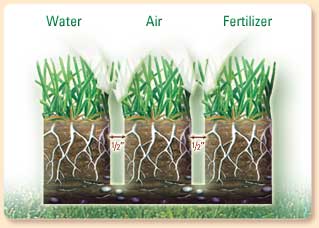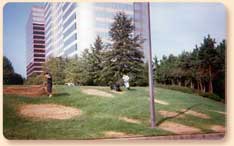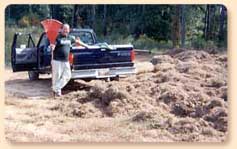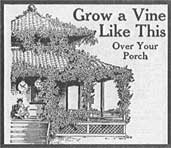Specialty Services
King GREEN offers a number of specialty services to help keep your lawn looking it's best. If you would like more information about any of these services, please contact us!
Year-Round Fire Ant Control Program
One application controls fire ants for an entire year, guaranteed! If fire ants should return to your landscape within one year, we will retreat at no extra charge.
Aeration
Warm-season aerating should be done from mid-April through August. Warm-season lawns are Bermuda grass and Zoysia grass.

Benefits
• Reduces soil compaction
• Improves air exchange between soil/atmosphere
• Better turfgrass rooting
• Better seed germination
• Increases water uptake
• Increases fertilizer uptake and use
• Helps increase thatch breakdown
• Reduces water runoff
• Increase lawn’s drought tolerance and overall health
Aeration and Seeding
Who Needs Aeration and Seeding?
• Anyone who has a Fescue lawn
Why We Aerate and Seed
• Fescue is a cool-season grass and takes a severe beating in the summer from heat, drought stress and disease.
• Fescue is a bunch-type grass and needs to be aerated and seeded every fall.
When Do We Aerate and Seed?
• We aerate and seed in late August through November.
• The best time to aerate and seed is early September through mid-October.
Preparing the Lawn for Aeration and Seeding
• Chemically or mechanically remove any unwanted grassy or broadleaf weeds.
• Mow the lawn to 1” – 1.5”.
• Remove any thatch or dead grass with a dethatcher (or hand rake).
• Flag sprinkler heads, invisible dog fences and anything you don't want damaged by the aerator.
• Water the lawn as much as possible prior to aerating.
Doing the Aeration and Seeding
• Apply a starter fertilizer such as 20-20-20 or 18-24-12 at about 5 pounds per 1,000 square feet.
• Remove any thatch or dead grass with a dethatcher (or hand rake). This is very important so that you get good seed-to-soil contact.
• Go over the lawn at least one time with a core aerator. Areas that are bare may need to be aerated more than once (tear it up!).
• Seed the lawn with a high-quality, turf-type tall Fescue at approximately 2 to 5 lbs. per 1,000 sq. ft. (more is not better). The 5 lb. rate is for establishment, and the lower rates are for overseeding. A good way to calculate how much seed you will need is to estimate the percentage of tall Fescue loss and multiply that number by the established seeding rate of 5 lbs. per sq. ft. For example, if 60% of the stand is damaged or dead, reseed with 60% x 5 = 3 lbs. per 1,000 sq. ft.
• Lightly put out wheat straw in bare areas that are prone to washout. This will help to keep seed in place and provide warmth for better germination.
• Apply a starter fertilizer at approximately 1 lb. per 1,000 sq. ft.
Care After Completion
• In order for seed to germinate, the seed must be kept moist.
• Water at least once a day for 10 to 20 minutes, or follow watering restrictions in your area. Follow this practice for two to three weeks.
• After three weeks, gradually decrease watering frequency to every other day, then every third day, etc.
• Try not to mow for at least three weeks. Make sure you have sharp blades on your first mowing of the young grass.
Renovation


Before attempting a renovation, consult one of our experts for further information.
If you don’t think renovation is a lot of work, try raking this mountain of thatch!
Some lawns get in such bad shape or are so full of perennial grasses such as Bermuda or Dallis Grass (see Weed Problems) that they need to be totally killed before seeding. When you think that you need to renovate your lawn, remember that it is A LOT OF WORK.
• 1 to 2 applications of a non-selective herbicide on areas to be renovated.
• Heavy dethatching and raking prior to aeration and seeding is very important.
• Follow aeration and seeding as outlined earlier.
Kudzu and Poison Ivy control

Kudzu and Poison Ivy are unpleasant at best, and King GREEN can help you rid your property of these noxious pests.
Did you ever wonder how Kudzu made its way to the United States? Check out this advertisement from an early 1900s Home and Garden Magazine.
“This is the most remarkable hardy climbing vine of the age, and one that should be planted by everyone desiring a dense shade. It comes from Japan, the land so productive of curious and ornamental flowers. The blossoms grow in panicles somewhat like Wistaria, but much larger in size and better clusters. Of a pleasing shade of purple and deliciously fragrant. For rapidly covering arbors, fences, dead or old trees, porches or rockeries there is nothing to equal it, growing to a height of 40 to 50 feet if permitted. It flourishes where nothing else will grow, in the best or poorest soil, and owing to its hardy nature, requires little or no care.”
Fungicide Applications
Disease and Brown Patch
Almost all lawns will get Brown Patch to one degree or another during the summer months. Factors that increase the incidence of this disease are improper watering, poor drainage, poor air circulation, dull mower blades and mowing at the wrong height. King GREEN offers a preventative disease program that will help in controlling disease. Our program for controlling disease and Brown Patch begins in late April and continues until late September. We will visit every other week to apply a fungicide for the prevention of Brown Patch and other diseases. This program will help to control the pathogens that cause the Brown Patch fungus.
Commercial Services
King GREEN offers a variety of services to fit the needs of commercial property managers. We will tailor a lawn care program specifically for your properties, and work with you to provide the finest lawn care available.
We also offer vegetation control for railroad sidings and Kudzu control.
Topdressing
Topdressing your lawn is an excellent way to relieve soil compaction. It also reduces thatch buildup, improves drainage and increases nutrient absorption.
The King GREEN topdressing process includes core aeration, fertilization, topdressing with a PGA grade sand at a rate of 1 ton of sand per 1,000 sq. ft., dragging, spot leveling and clean up.





